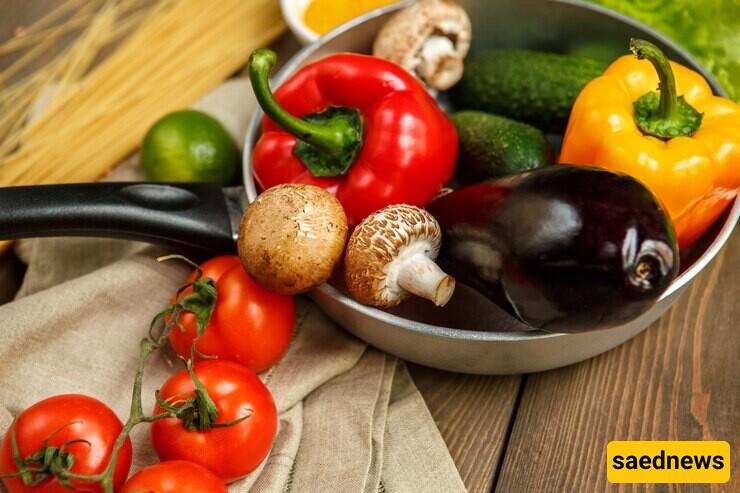SAEDNEWS: Vegetables are recognized as some of the healthiest foods, rich in vitamins, minerals, and other nutrients essential for optimal body function and immune system support. Increased vegetable consumption reduces the risk of various diseases, including heart disease, type 2 diabetes, and certain cancers.

Despite the numerous benefits, vegetables often occupy a minimal portion of the daily diet, likely due to cooking methods and taste preferences. Here are several methods to cook vegetables that retain their nutrients and enhance their flavor.

Stir-frying is a quick method that involves cooking vegetables in a small amount of oil over high heat. This technique preserves the vitamins, minerals, flavor, and color of the vegetables. It is suitable for vegetables like asparagus, artichokes, peas, bell peppers, onions, and mushrooms. Cut the vegetables into small pieces and stir frequently to ensure even cooking. Use sesame or olive oil for added flavor.
Boiling is one of the simplest ways to cook vegetables. To preserve nutrients, use the minimum amount of water. Wait until the water reaches a rolling boil before adding vegetables like broccoli and green beans, and cook briefly. For softer vegetables, add them before the water boils and reduce the heat. This method is ideal for tough vegetables like chickpeas, green beans, potatoes, turnips, and other root vegetables.
Tip: Adding a pinch of salt to the boiling water enhances the flavor but do not overuse salt, as it can increase blood pressure.
Roasting vegetables like onions, squash, and asparagus in the oven is easy. Cut the vegetables, place them on a baking sheet, and drizzle with vegetable oil. The high oven temperature caramelizes the natural sugars, giving the vegetables a sweet flavor. Roasting also preserves their vitamins and minerals.
Tip: Roast meat or chicken alongside the vegetables for a complete meal. Add spices and garlic for extra flavor.
Grilling is a great way to cook vegetables, especially in warm weather. It preserves nutrients and enhances flavor, similar to roasting. Vegetables like corn, bell peppers, zucchini, onions, and potatoes grill well.
Tip: During colder months, grill vegetables over a stove flame using skewers or a grilling rack.
Steaming is one of the healthiest cooking methods as it does not require submerging vegetables in water, preserving most of their vitamins. Steaming is ideal for vegetables like broccoli, carrots, cauliflower, green beans, spinach, and similar vegetables.
Tip: Add cinnamon, lemon zest, or ginger to the boiling water for added flavor.
Cooking times vary based on the thickness and water content of the vegetables. Here are approximate times for small pieces (2-3 cm) at 205-220°C:
Asparagus: 20 minutes
Bell peppers: 20 minutes
Butternut squash: 25 minutes (halved)
Cabbage: 30 minutes for 2-3 cm pieces
Carrots: 30 minutes (3 cm pieces)
Cauliflower: 25 minutes
Green beans: 20 minutes
Corn: 40 minutes
Kale: 15 minutes
Onions: 35 minutes
Potatoes: 45 minutes
Sweet potatoes: 30 minutes
Tomatoes: 15 minutes (cherry or grape)
Yellow squash: 20 minutes
Zucchini: 20 minutes
Beets: 30 minutes
Eggplant: 25 minutes
Radishes: 10 minutes

